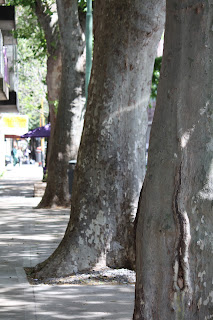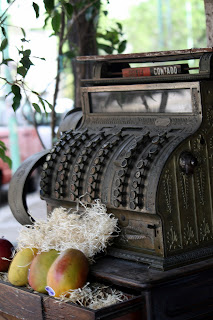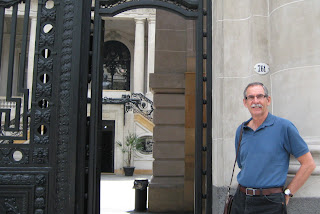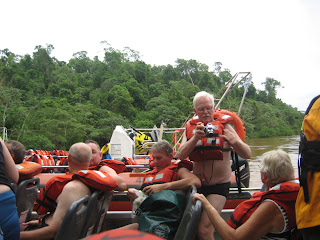Today's mission began with a visit to an office near the Colegio de Escribanos on Avenida Las Heras. Henry paid 35 pesos to certify that a legal escribano had officially made the copy of the original. We left the copy there and were told to return for it in 45 minutes.
With that much time to kill, we took a walk down the street. We saw what we thought was an old church and went in to explore. Formerly the Church of the Sacred Heart of Jesus, the building was now a college of engineering.
An enormous Gothic structure originally built in 1901-1904, the building had a museum on the ground floor. We wandered upstairs, admiring the architecture. There were classrooms which appeared to once have been chapels.
One smaller, empty room had a chair that Henry tried on for size.
Although we ran into a few students, no one asked what we were doing there or worried about us. After wandering around a bit, it was time to return to pick up the certificate.
We returned to pick up the officially certified copy, which meant standing in two lines.
As we left, we took a picture of the extremely helpful man at the Information Desk -- an appropriate place for him, as he was full of information!
We headed back to 819 Arenales, the government building we went to last Friday. This time, they demanded the original birth certificate and told us that the original needed to be authenticated
before he had copies made -- not what they told us the first time!
He was sent downstairs to pay 39 pesos for a stamp on the original birth certificate.
Then we got in
another line to turn in the original with the receipt for payment.
(This photo, above top, shows his original birth certificate beneath the receipts.) We went back upstairs where we were issued a tracking number and told to come back in 45 minutes.
This time we headed to a cafe where we indulged in a capuccino that came with a sugary treat.
Soon it was time to return to the office. Henry gave them his tracking number.
And, FINALLY, the gentleman in the pink shirt gave him his signed, stamped, and certified original birth certificate.
Now he can apply for his Argentine passport!



























































